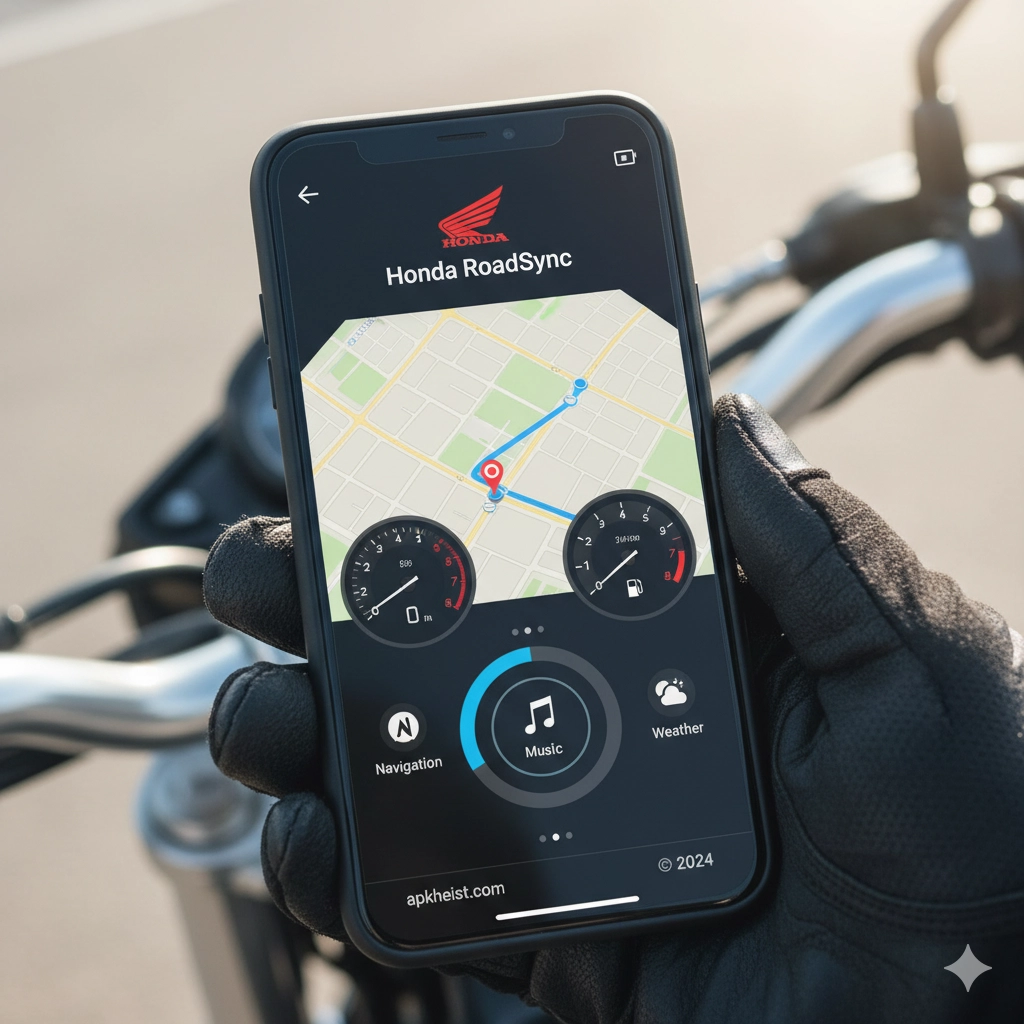Long intro: Designed for commercial and light-commercial vehicle fleets, the Honda RoadSync app pairs with in-vehicle hardware to deliver real-time diagnostics, trip logging, route details, and secure document exchange between drivers and fleet managers. The app emphasizes simplicity and driver safety: automated vehicle reporting, digital paperwork, and ELD-friendly workflows help reduce administrative friction while improving compliance and visibility across operations. For drivers who need companion tools and integrations while on the move, RoadSync complements a broader app ecosystem — from knowledge platforms to vehicle parts and OBD2 scanners — which helps teams handle training, maintenance, and diagnostics without leaving the cab.
Mastering Knowledge on the Go: O'Reilly Pro App Review
AUTODOC: The Smart Way to Buy Car Parts Online with Ease
DarknessBot App — The Ultimate Night
LKW.APP: The Smart Truck Driver Parking
Is Carly the Best OBD2 Car Scanner App
Contents:
1. Key features overview — concise summary of what RoadSync offers.
2. Driver experience — how the app supports daily driver workflows.
3. Fleet manager dashboard & reporting — visibility, alerts, and analytics.
4. Integrations and ecosystem — third-party tools, diagnostics and parts support.
5. Safety, compliance & data security — regulatory considerations and protections.
6. Deployment & scaling for fleets — pilots, rollouts and device management.
7. Troubleshooting & driver onboarding tips — common issues and best practices.
1. Key features overview
The Honda RoadSync app bundles essential telematics and operational features in a compact, driver-friendly interface. Core capabilities typically include automated trip recording, engine and fault code alerts, fuel and odometer capture, scheduled maintenance reminders, and secure document exchange (proof-of-delivery, inspection reports). For fleets that require ELD-compliant hours tracking or custom event triggers, RoadSync provides configurable data points that can be exported to fleet management systems or accessed through APIs. The app's design emphasizes minimal in-cab interaction: automated uploads, voice prompts, and streamlined forms reduce manual entry while preserving accurate records for managers and compliance teams.

2. Driver experience
For drivers, RoadSync prioritizes safety and efficiency. The home screen highlights current route status, next stops, and any active vehicle alerts. Pre-trip and post-trip inspections are digitized with quick checklists and photo upload support so drivers can complete mandatory inspections in minutes. Messaging and document transfer occur over a secured channel to reduce paper handling. RoadSync also integrates with mobile knowledge and training resources for on-the-go reference: for example, drivers can consult quick repair guides or parts ordering portals like AUTODOC when troubleshooting minor issues, or access product training resources similar to those found on platforms such as O'Reilly Pro for procedural refreshers. By reducing time spent on admin, drivers can prioritize safety and on-time delivery.
3. Fleet manager dashboard & reporting
Fleet managers benefit from near-real-time telemetry and aggregated reporting. RoadSync aggregates GPS traces, engine fault codes, idle time, and driver behavior metrics (e.g., harsh braking, rapid acceleration) into dashboards and scheduled reports. Alerts can be configured for critical thresholds — low fuel, severe fault codes, maintenance due — and dispatched to field technicians or fleet supervisors. Historical exports enable cost analysis (fuel, maintenance, utilization) and support compliance audits. Integration with backend systems creates an end-to-end workflow: a fault code reported by RoadSync can automatically generate a work order, suggest replacement parts from vendors, or schedule a garage appointment to minimize downtime.
4. Integrations and ecosystem
RoadSync is architected to play well with other vehicle and fleet tools. Typical integrations include OEM telematics, maintenance management (CMMS), routing and dispatch platforms, and OBD2 diagnostic apps like Carly for deeper fault analysis. For multimedia and in-vehicle features, fleets sometimes pair RoadSync with apps such as aaad CarStream when additional cabin functionality is required in non-safety-critical contexts. For truck drivers seeking parking assistance or regional services, companion apps like LKW.APP complement RoadSync by solving operational pain points that telematics cannot handle directly. Effective integrations reduce double entry, speed up repairs (linking to parts suppliers such as AUTODOC), and provide a more complete operational picture to managers.
5. Safety, compliance & data security
Safety and regulatory compliance are central to telematics. RoadSync supports electronic inspection forms and can be used to document hours-of-service where local regulations require it. Data security is enforced by encrypted connections and role-based access controls: drivers access only the information they need, while managers and maintenance teams have elevated permissions for diagnostics and historical data. Implementations should follow privacy best practices — disclose telemetry collection transparently to drivers, retain data per legal requirements, and apply least-privilege principles on API keys and integrations. When using the app alongside other services, ensure each integration maintains equivalent security controls.
6. Deployment & scaling for fleets
Rolling out RoadSync across a fleet requires planning: pilot a small vehicle subset to validate hardware compatibility and workflow fit, establish a device provisioning process, and document onboarding steps for drivers. Device management (firmware updates, SIM provisioning) should be centralized; some fleets elect to pair RoadSync with a managed telematics gateway provided by the OEM or a certified partner. Training materials and quick reference cards — or links to external training content such as Mastering Knowledge-style resources — accelerate adoption. For larger fleets, automate user provisioning via single sign-on and group policies to minimize admin overhead as the number of active devices grows.
7. Troubleshooting & driver onboarding tips
Common issues include connectivity dropouts, GPS drift, and permissions or background-process restrictions on drivers’ phones. Effective mitigations: enforce device settings (battery optimization off for the app), ensure firmware is current on telematics hardware, and provide a short troubleshooting checklist drivers can follow before calling support. During onboarding, run a live demonstration of a pre-trip inspection, show how to capture photos and attach documents, and run through the alert flows so drivers know which in-cab notifications require immediate action versus informational items. If deeper diagnostics are needed, guide drivers to use OBD2 scanning workflows or to request a service appointment through integrated maintenance portals.
Frequently Asked Questions (FIAT App related)
Q1: What is the FIAT App and how is it different from Honda RoadSync?
The FIAT App is a manufacturer-specific vehicle companion that provides services for Fiat vehicles — remote locking, vehicle status, service scheduling, and owner resources. Honda RoadSync, by contrast, is a fleet telematics and workflow tool focused on fleet operations, diagnostics, and driver workflows rather than consumer vehicle remote services.
Q2: Can FIAT App data be integrated with telematics platforms like RoadSync?
Integration depends on available APIs and permission from the OEM. While consumer OEM apps often restrict data for privacy reasons, many fleets use telematics gateways or third-party aggregators to combine vehicle OEM feeds with telematics data. Check the FIAT App terms and API access options for enterprise integrations.
Q3: Does the FIAT App provide maintenance reminders that fleets can use?
The FIAT App typically shows manufacturer-recommended service reminders for consumer owners. For fleet usage, a dedicated fleet management or CMMS integration provides more granular scheduling, work-order automation, and vendor coordination than a consumer OEM app.
Q4: Are security and data privacy concerns different between FIAT App and fleet telematics?
Both types of apps must protect user and vehicle data, but fleet telematics often requires stricter role-based controls, longer retention for audit, and enterprise-grade encryption and logging. Consumer apps focus more on owner convenience features and may not meet enterprise compliance needs without additional controls.
Q5: Can drivers use both FIAT App and RoadSync on the same vehicle?
Technically, drivers can use both if the vehicle and plans support multiple apps, but coordinate which system is authoritative for a given workflow to avoid conflicting actions (e.g., remote engine start or locking). For fleet vehicles, standardize on approved tools and permissions.
Q6: How do updates and compatibility differ between FIAT App and telematics platforms?
FIAT App updates are managed by the OEM and tied to consumer feature sets, while telematics platforms like RoadSync update both app and backend components and may also require firmware updates for in-vehicle gateways. Managing compatibility requires an update policy and test windows to avoid service disruption.
Q7: Where can I find parts or OBD2 diagnostics recommendations when FIAT App or RoadSync flags an issue?
When an issue is flagged, use recommended dealer channels for manufacturer-specific repairs. For parts procurement or DIY diagnostics, vendors and tools such as AUTODOC and OBD2 apps (for example, Carly) provide parts lookup and deeper diagnostic insight that complement OEM guidance.






